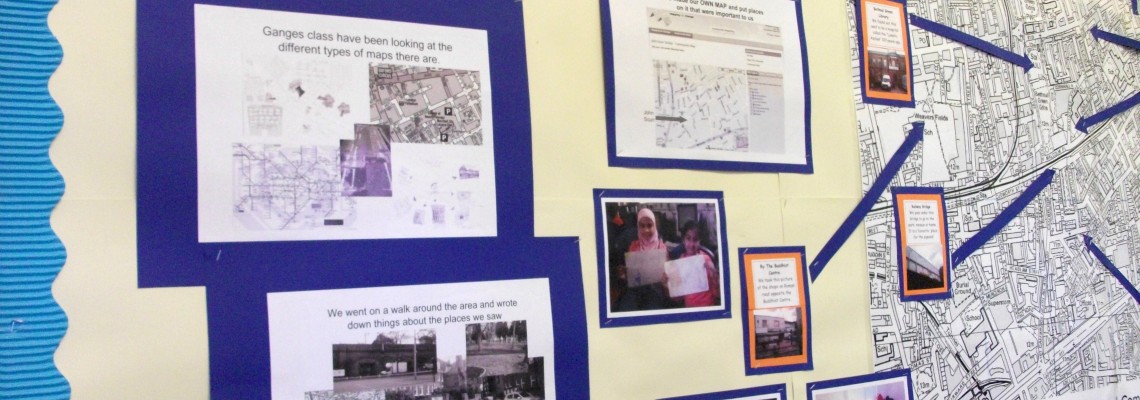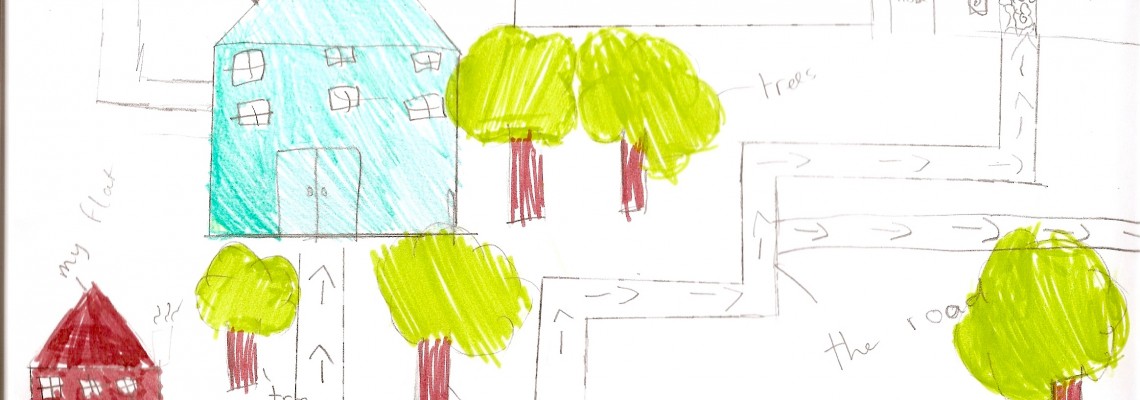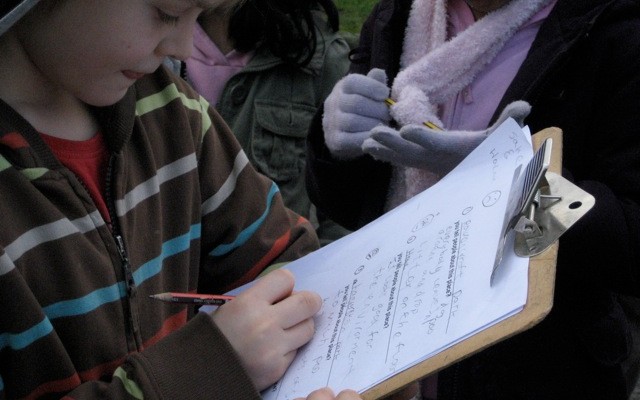Mapping for Change in collaboration with the Humanities Education Centre (HEC) and local specialist on learning and ‘place’ Maggie Hewitt, worked with three schools in Tower Hamlets (Columbia School Community Map, Arnhem Wharf School Community Map and John Scurr School Community Map) to pilot a brand new process in which Year 4 pupils develop personalised maps of their local area with their own likes, memories and views on change.
Our Role
The mapping process included learning how to navigate online systems like Google earth and Google maps, which helped to develop a ‘child-centred view’ of the area. Children were encouraged to reflect on their experiences of place, supporting geographical content, exploration and sharing around identity and enhancement of self-esteem and confidence.
Maps were used as grids and stories. Students were firstly taken around their school’s neighbourhood, where they had the chance to observe the environment and make notes about several themes (green spaces, memories, questions, answers, things liked, disliked and wished). These were classified according to ‘my world ’and ‘ on my way to school diaries’. The students’ ideas across different ‘layers’ were first written onto large paper maps using post-it notes.
Impact
After the notes, drawings and photos had been organised, students had the chance to share their own perception with others. The whole activity was important for several reasons: pupils had the change to explore and take ownership of their local environment, share their views and findings, and work together to seek solutions. According to a teacher at the Columbia school: “They are beginning to understand that they are entitled to an opinion about their environment and that their ideas are valid.”
Related Projects
D-NOSES - Tackling Odour Pollution Across Europe
D-NOSES is a three-year EU funded research project which aims to provide a solution to the largely neglected issue of odour pollution, changing the traditional top-down approach for a bottom-up one. The lack of regulation from authorities around odour pollution is mainly due to it being difficult to reliably measure and the potential solutions being costly to implement.
Evaluating People Zones Leicestershire
Through engaging residents in an Asset-Based Community Development Approach, our research for People Zones Leicestershire generated lasting resources which helped identify opportunities for hyper localised community initiatives. Now, we’re returning to evaluate the program’s impact, aiming to provide concrete evidence of its effectiveness in reducing crime and promoting community well-being.



